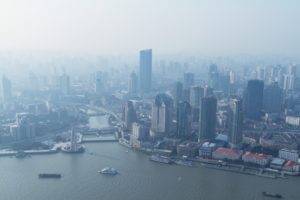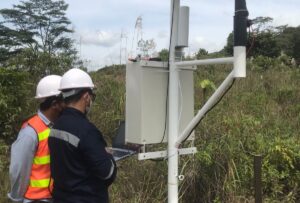EDF and Cangzhou City make breakthroughs in China’s fight against air pollution
China’s economic reforms have helped to usher in rapid growth, however, this rapid growth is accompanied by air pollution.
China has made great strides in improving air quality in recent years. Many cities, such as Cangzhou in China’s industrial heartland have tried to find a way to identify pollution sources with accurate and effective methods.
Following China’s ‘Blue Sky’ campaign, which kicked off in 2018, the Chinese Ministry of Ecology and Environment and local environmental authorities jointly conducted a series of on-site inspections to crack down on air pollution and environmental law violations.
Because these on-site inspections were guided by a randomised selection of stationary sources, the inspections found only 65,000 violations out of the 925,000 on-site inspections conducted under the Intensive Supervision Mechanism in 39 major cities in 2019, a detection rate of just 7%.
Despite the massive build-out of fixed monitoring stations nationwide between 2012 and 2020, their limited scope and their high costs have limited the precision of localities’ monitoring networks.

To fill the gaps left by stationary monitoring systems and local authorities’ routine inspections in Cangzhou, Environmental Defense Fund’s Beijing office partnered with the municipal government, the HD Environmental Consortium, and SUSTC Engineering Technology Innovation Center (Beijing) to establish a pilot project for monitoring pollution hotspots using mobile monitors in the city.
Using monitoring instruments mounted to vehicles in the municipal taxi fleet, the Cangzhou pilot project uses these mobile monitors’ data to generate a real-time air quality map for Cangzhou via an online data platform.
Taking measurements every three seconds throughout the day, these taxi-mounted monitors form a monitoring network with a 100m x 100m resolution compared to the several kilometres’ resolution from fixed government monitors.
This delivers a more precise and real-time monitoring solution at a fraction of the cost.
In addition, the pilot project’s algorithms not only provide guidance for finding hot spots but also help inspectors know what to look for once on site.
Enforcement officers then can use handheld devices and drones to assess emissions at the inspection site and provide suggestions to help mitigate pollution emissions.
By enhancing the air quality monitoring grid’s resolution with a combination of fixed micro-monitors and taxi-mounted mobile monitors, the Cangzhou pilot project helped identify major hotspots of pollution previously unidentified in the city.
Specifically, with the data-driven air quality monitoring and enforcement system, during the three-month campaign, the local environmental inspectors in Cangzhou were able to identify suspected emissions sources during 70% of the newly optimized inspections. The pilot project has also contributed to the city’s improvements in air quality: in 2020 Cangzhou’s annual average PM2.5 concentration decreased by 2 µg/m3 compared to 2019 levels, contributing to Cangzhou’s solid progress of decreasing PM2.5 concentrations by roughly a third from 2015 to 2020.
Although Cangzhou is still on its air quality journey, the city’s strengthened monitoring capacity marks a strong step towards more precise and effective pollution management.
More significantly, the lessons from Cangzhou’s successes in air quality monitoring present an opportunity to disseminate best practices throughout China and the rest of the world
This experience can help not only China’s progress towards its 2035 ‘Beautiful China’ initiative but also help other developing countries improve air quality while maximizing cost-effectiveness.
By scaling up the monitoring apparatus from the ‘Cangzhou Model’ globally, we can not only enjoy bluer skies and a cleaner planet, but also protect future generations’ health from unchecked pollution.
Photo by Photoholgic and Ihor Dvoretskyi

















